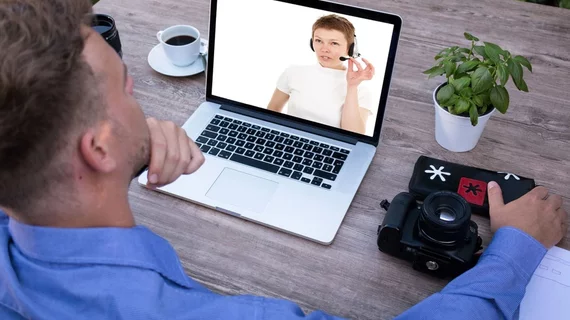Referring providers want virtual consultations with radiologists
How do radiologists and referring providers feel about using virtual consultations in lieu of phone calls to review patient results and/or recommendations?
According to the feedback from providers who completed a virtual consultation pilot program, most prefer virtual interactions. Virtual consultations help diminish the effects of reading room “chaos” owed to frequent interruptions, which can occur up to 27 times per hour, according to experts involved in the pilot program. Some institutions have deployed reading room assistants to help temper the interruptions, but a team from Medstar Georgetown University Hospital recently proposed a different approach—a Virtual Radiology Reading Room, or “VR3.”
The Journal of Digital Imaging published details of the program on Jan. 25.
“VR3 is specifically designed to replace the radiology reading room phone and enable the radiologist to continue to work as part of the clinical care team fielding radiology consults without being confined to the same physical space,” explained research leader Joseph H. Yacoub.
For the VR3 pilot program, referring providers use a web-based application to communicate with radiologists and request how they would like to consult on patient findings—either by phone call or virtual consultation using Microsoft Teams. Referrers can submit questions prior to the consult, mark a level of urgency and specify a reading room that is most relevant to their patient’s exam (body, neuroradiology, or musculoskeletal).
Once radiologists in the designated reading room are notified of the request, they can claim the consultation and schedule a discussion via Teams.
The pilot program was launched at Medstar Georgetown University Hospital in 2021. Six months after its initial deployment, referring providers and radiologists who utilized the virtual consultations were surveyed about their experiences.
According to the responses of 40 referring providers and 44 radiologists, virtual consultations were well received. It was rated 4.7 and 4.1 out of 5 stars and 70% of clinicians preferred virtual consults to phone calls.
Most respondents agreed or strongly agreed that the program was reliable, efficient and easily integrated into workflows. The small portion of the group who preferred phone calls noted that they were “just more used to using the phone.”
Since its implementation, the experts have further improved the program by making it more visible to referring providers and decreasing the number of clicks required for radiologists to access patient charts. The team is currently experimenting with the solution at an affiliated community hospital to test its utility beyond an academic radiologic setting.
To learn more, click here.

